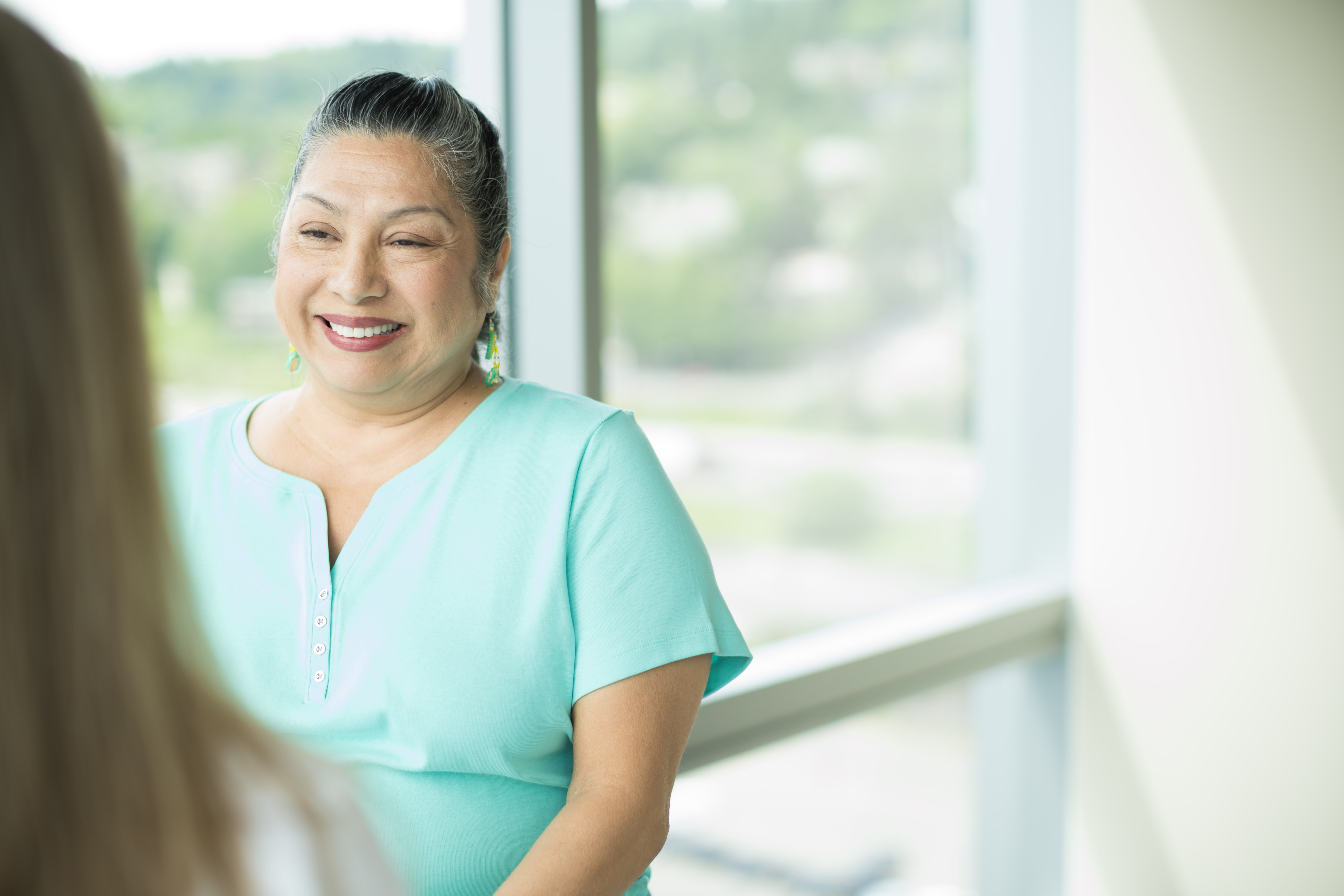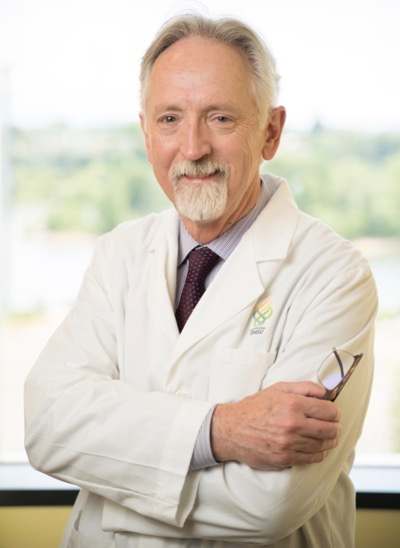Essential Tremor
Your care team at the OHSU Parkinson Center will bring you extensive understanding and leading-edge treatments for essential tremor. You’ll find:
- A full care team of specialists who will work together to meet your needs and wishes.
- Innovative treatments for essential tremor, including deep brain stimulation surgery for certain patients.
- Rehabilitation specialists trained in neurologic disorders.
- “Asleep” DBS under general anesthesia, a technique pioneered at OHSU.
- Expert genetic counseling and testing.
Visit our Other Movement Disorders page to learn about conditions including: corticobasal degeneration, Huntington's disease, Lewy body dementia, multiple system atrophy, progressive supranuclear palsy and others.
Understanding essential tremor
What is essential tremor?
Essential tremor is the most common movement disorder. It is marked by involuntary and rhythmic shaking. It occurs most often in the hands but can also affect the arms, head, voice, torso and other body parts. It is a progressive condition, meaning it tends to worsen over time. Severity, age at onset, and whether or how fast it gets worse vary widely.
Why is it called “essential”? This means it exists alone, without a related illness or injury.
How it differs from Parkinson’s: Essential tremor is sometimes confused with Parkinson’s disease because both cause unintentional movement. The main difference is essential tremor is an action tremor, mostly occurring when muscles are working. Parkinson’s is a resting tremor, occurring when muscles are relaxed. Essential tremor is also far more common.
Causes: Essential tremor is a nervous system disorder because something goes wrong with how nerve cells in the brain communicate. Scientists are still working to pinpoint what happens. They suspect a genetic mutation causes the brain malfunction, because many cases appear to be passed down in families.
Types: About half of cases are hereditary, with a genetic mutation passed down from a parent to a child. This type is called familial essential tremor. Scientists have not yet identified the mutation.
Outcomes: Essential tremor has no cure, but it does not shorten life. Treatments can relieve symptoms. Tremors, ranging from mild to severe, can make activities such as eating, drinking, writing, shaving or putting on makeup difficult.
Triggers: Things that can worsen tremors include:
- Caffeine
- Stress
- Intense emotion
- Fatigue
- Low blood sugar
- Fever
- Certain medications

Who gets essential tremor?
As many as 10 million people in the United States (or about three in 100 people) have essential tremor, according to the U.S. National Library of Medicine. An exact number is unknown because many cases are undiagnosed or misdiagnosed.
Risk factors:
- Age: Essential tremor can occur at any age but is more common in adults over 40.
- Family history: Essential tremor can be inherited, though patterns vary. Specific genes have not been confirmed.
- Gender: It affects the genders equally in adults. In childhood, it may be more common in boys.
Symptoms of essential tremor
- Rhythmic shaking, typically in the hands when trying to use them.
- Head shaking in a “no-no” or “yes-yes” pattern.
- Trembling voice.
- Difficulty with tasks such as drinking from a glass, eating or writing.
- Symptoms that get worse with caffeine, fatigue or other triggers.
- Symptoms that worsen over time.
Diagnosing essential tremor
There is no specific test for essential tremor. It is identified through a thorough exam, analysis of family history, and ruling out other causes. Tests may include:
- Physical and/or neurologic exam, with checks of your reflexes, sensations and coordination
- Checks of your ability to do certain tasks such as drinking from a glass or drawing a spiral
- Questions about your family and medical history
- Blood and urine tests
- Imaging, such as an MRI (magnetic resonance imaging) scan
Essential tremor treatments
Your care team at the OHSU Parkinson Center will tailor a treatment plan to your needs. We are dedicated to helping you control symptoms so you can do the things that are important to you.
Lifestyle changes
Mild cases of essential tremor may not need treatment. Your doctor can help you manage symptoms, for example, by avoiding triggers and using relaxation techniques to lower stress.
Medications
Beta blockers, anti-seizure drugs and tranquilizers may reduce tremors.

Deep brain stimulation
If your tremors severely affect your quality of life, DBS surgery may be an option. DBS surgery implants a device that sends mild electrical pulses to the brain to control muscle contractions.
We have one of the most experienced DBS teams in the U.S., offering excellent outcomes. The team is led by Dr. Kim Burchiel, an internationally known neurosurgeon and DBS pioneer. He innovated a technique at OHSU that spares patients from having to be awake during surgery.
Focused Ultrasound
If your tremor symptoms are worse or advancing faster on one side than the other, then focused ultrasound may be an option for you. This incisionless surgery ablates (burns) the exact part of your brain that is causing your tremor without an incision.
This treatment is a good alternative to deep brain stimulation for patients who take blood thinners or do not want to have invasive brain surgery.
Rehabilitation therapy
Therapists on OHSU’s neurologic rehabilitation team can help you strengthen muscles and modify movements to lessen the effect of symptoms.
For patients
- Referral: To become a patient, please ask your doctor for a referral.
- Questions: For questions or follow-up appointments, call 503-494-7772 .
- Find forms for new and returning patients.
Location
Parking is free for patients and their visitors.
OHSU Parkinson Center
Center for Health & Healing Building 1, eighth floor
3303 S. Bond Ave.
Portland, OR 97239
Map and directions
Refer a patient
- Refer your patient to OHSU.
- Call 503-494-4567 to seek provider-to-provider advice.
Patient resources
Email pcoeducation@ohsu.edu to sign up for our newsletter.